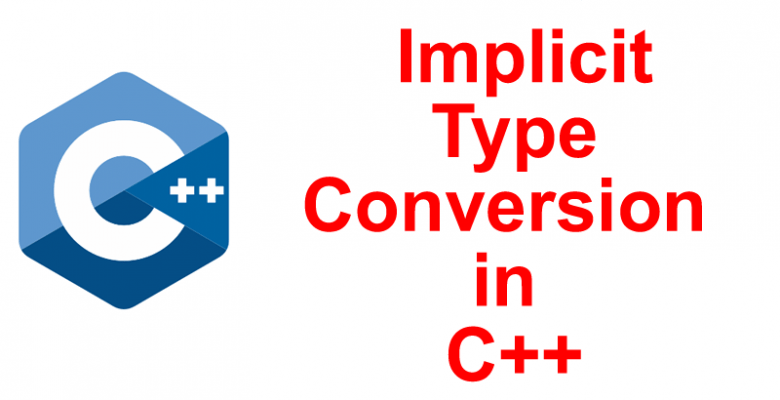Implicit type conversion in C++ | Automatic type conversion in C++
Implicit conversion in C++ is also called automatic type conversion in C++. It is the process in which output of arithmetic expression automatically gets converted into a specific data type.
Basic rule of Automatic type conversion is, output of arithmetic expression will be of that data type that has the highest number of bytes and range.
Example:
In an arithmetic expression if one value is of short type and other is of int type, the output is of int type because int type value more size and better range of values as compared to short data type.
Rules of implicit conversion
| Data type of first value | Data type of Second Value | Data type of Result |
| short | short | short |
| short | int | int |
| short | long | long |
| short | float | float |
| short | double | double |
| short | long double | long double |
| short | char | short |
| int | int | int |
| int | long | long |
| int | float | float |
| int | double | double |
| int | long double | long double |
| int | char | int |
| long | long | long |
| long | float | float |
| long | double | double |
| long | long double | long double |
| long | char | long |
| float | float | float |
| float | double | double |
| float | long double | long double |
| float | char | float |
| double | double | double |
| double | long double | long double |
| double | char | double |
| long double | long double | long double |
| long double | char | long double |
| char | char | char |
//Program to demonstrate Implicit conversion
#include<iostream>
using namespace std;
int main()
{
int n;
double m;
n=10/3; //Line 7
cout<<"\n10/3="<<n;
m=10/3; //Line 9
cout<<"\n10/3="<<m;
n=10.0/3; //Line 11
cout<<"\n10.0/3="<<n;
m=10.0/3; //Line 13
cout<<"\n10.0/3="<<n;
return 0;
}
Output:
10/3=3 10/3=3.000000 10.0/3=3 10.0/3=3.333333
** In line 7 of above program, 10 and 3 are int type values so result of 10/3 is of int type i.e. 3 which is assigned to variable n which is of int type. So n contains 3.
In line 9, 10 and 3 are int type values so result of 10/3 is of int type i.e. 3 which is assigned to variable m which is of double type. So m contains 3.000000.
In line 11, 10.0 is double type value and 3 is an int type value so result of 10.0/3 is of double type i.e. 3.333333 which is assigned to variable n which is of int type. So n contains 3.
In line 13, 10.0 is double type value and 3 is an int type value so result of 10.0/3 is of double type i.e. 3.333333 which is assigned to variable m which is of double type. So m contains 3.333333.
